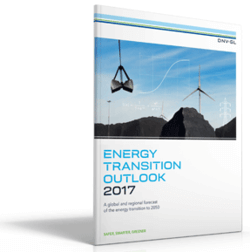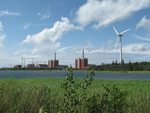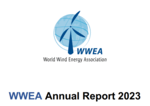News Release from windfair.net
Wind Industry Profile of
Watershed moment: World will reach a plateau of final energy demand around 2030
For the first time, the Norwegian certifier DNV GL has published its "Energy Transition Outlook" this week with its outlines on the next stages of the energy transition. As the company is active both in the field of renewable energies and in the oil and natural gas industries, it is predestined to carry out a balanced and neutral analysis of the energy transition. “As a company, we are highly exposed to the radical changes that will come to every part of the energy value chain, and it is critical for our customers and ourselves that we understand the nature and pace of these changes,” said Remi Eriksen, Group President & CEO of DNV GL at the presentation of the study in London.
The results make it clear that humanity is heading for a peak in the energy market. Thanks to the rapid electrification of the world's energy systems, the energy efficiency can be improved more quickly than the global economy can grow which is why the energy demand is set to plateau from 2030 onwards.
Electricity mix will be less diverse
The electricity mix in 2050 will also look different than today, as only a few energy sources determine the power supply: the proportion of renewable energies will continue to grow and by the year 2050 will make up almost half of the electricity mix. The other half is powered by natural gas, which will overtake oil as the most important fossil energy source by 2034 at the latest. The importance of oil, sometimes referred to as "black gold" in the past, will decrease in the next 10 to 15 years, just like nuclear power. The use of coal has already exceeded its peak and will no longer play a significant role in the future.
Transport sector ensures demise of oil
The transport sector will have a major stake in the demise of oil, because it will shift to electric vehicles in the future. Electric vehicles will achieve cost parity with internal combustion vehicles in 2022 and, by 2033, half of new light vehicle sales globally will be electric. "Ultimately, it will be a willingness to innovate and a capability to move at speed that will determine who is able to remain competitive in this dramatically altered energy landscape,“ warns Eriksen. The current example from Germany shows that automotive companies have been denying the trend for many years and are now desperately trying to save their market shares for vehicles with internal combustion engines somehow over time. Other countries, however, have long been working on the shift to electric vehicles.
Renewables will get even more cheaper
Costs for photovoltaic and wind power will even more decrease in the future: DNV GL expects that renewables will improve their cost performance at a much faster rate, benefitting from the ‘learning curve’ effect. A price decline of 18% or 16% is therefore likely. Nevertheless, this is not enough to ensure that the climate protection targets of the Paris Agreement will be met.

Two degrees are impossible
It is important to note that the climate protection targets laid down by the international community in the Paris Climate Agreement can not be achieved. In particular, the two-degree target to be achieved by reducing CO2 emissions is missed by 0.5 degrees.
“Even with energy demand flattening and emissions halving, our model still points to a significant overshoot of the 2°C carbon budget. This should be a wake-up call to governments and decision-makers within the energy industry. The industry has taken bold steps before, but now needs to take even bigger strides,” says Eriksen.
Economy and politics need to work hand in hand
“Until 2050 the electricity share of energy demand will grow from 18% to 40% yet this transformation is not happening fast enough. Speeding up the acceleration of electrifying sectors like heat and transport will be one vital measure to put the brakes on global warming. The climate challenge is not an engineering challenge, but one of governance. We call upon all stakeholders to maximise the electrification of their operations,“ said Ditlev Engel, CEO at DNV GL – Energy.
Only if everybody works hand in hand, it may be possible to convert the energy systems quickly enough in order to stop the destruction of the earth in time.
- Author:
- Katrin Radtke
- Email:
- press@windfair.net
- Keywords:
- energy transition, coal, nuclear, natural gas, renewables, Paris Climate Agreement























